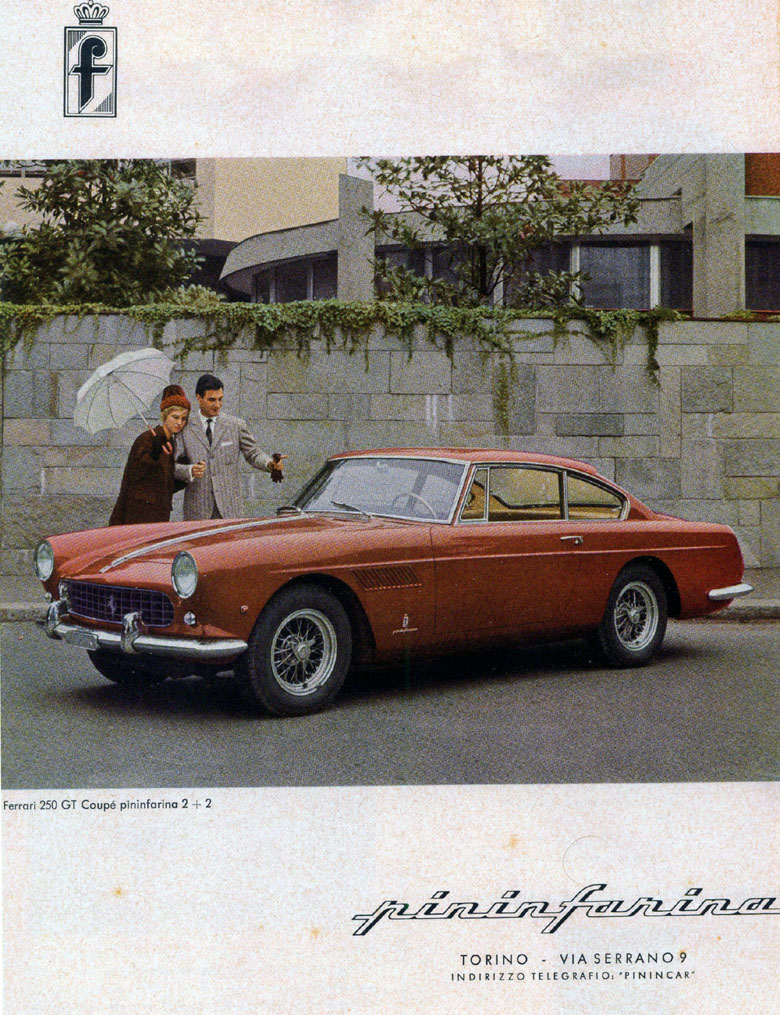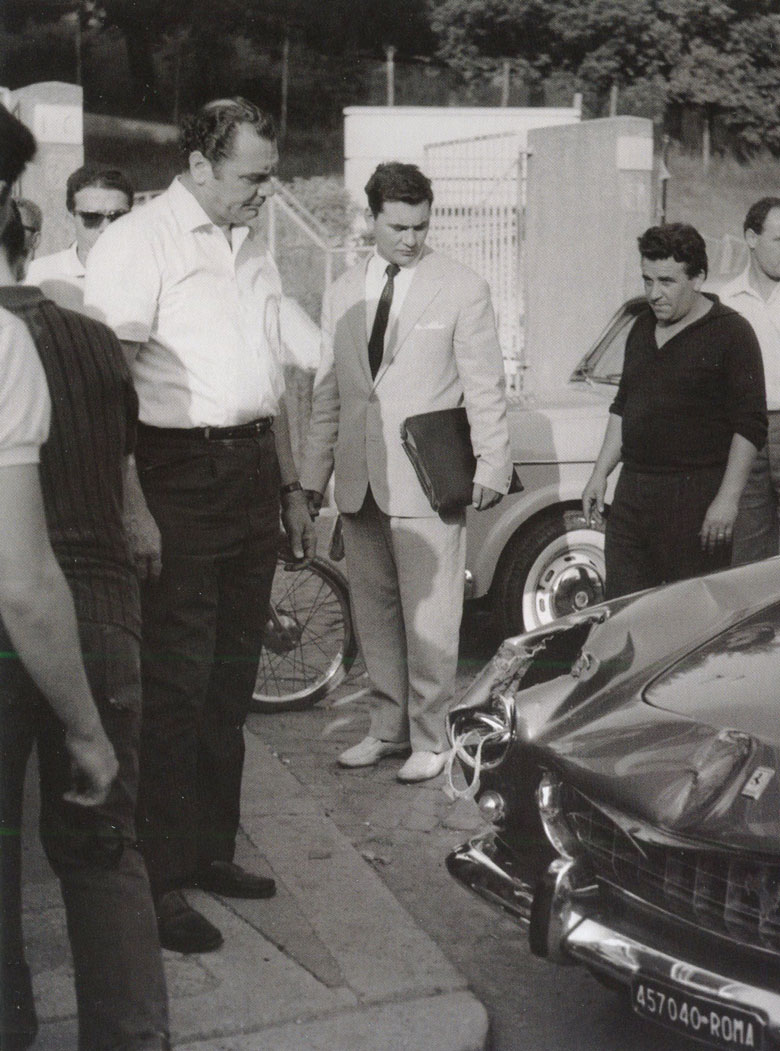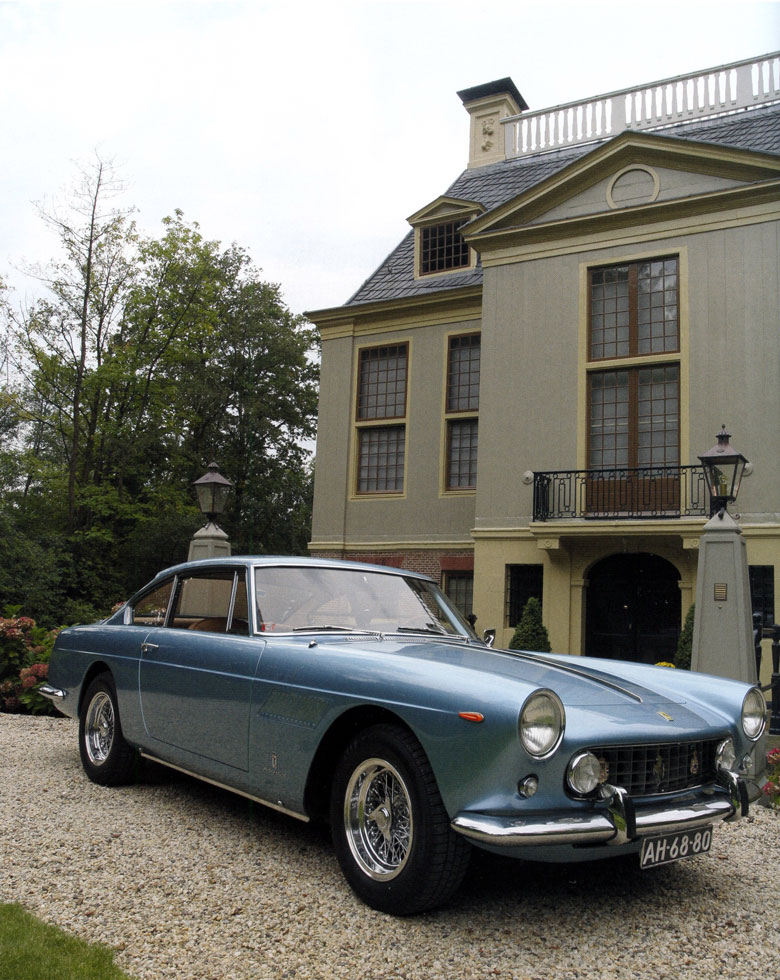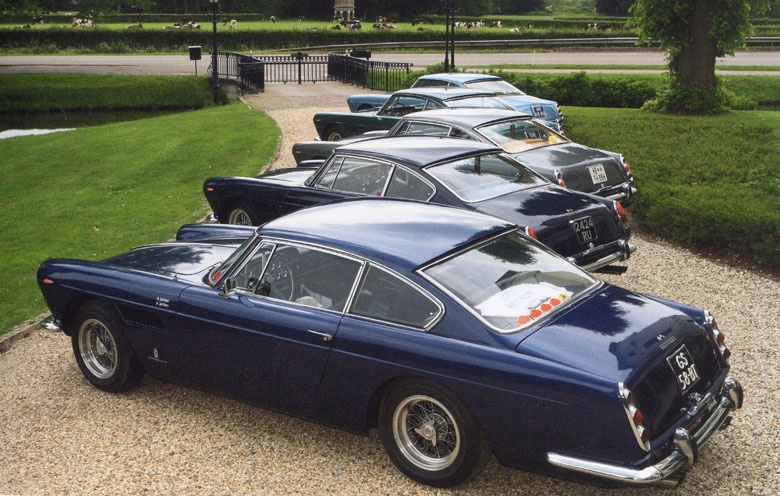Review by Pete Vack
All photos from the book
Ferrari 250 GTE
Editor: 2Produce
Author: Ed Heuvink with Yvo Alexander
Foreword: Luigi Chinetti Jr.
Format: 23 x 28.5 cm, hardcover in dust jacket
Pages: 288
Pictures and illustrations: over 200 in colour and 140 in black-and-white images
Languages: English
Price: 125 Euros
Author Ed Heuvink and 250 GTE owner (ex by now) Yvo Alexander have created what might be a real rarity in the Ferrari world; a book devoted to that particular model. As far as we can tell there seems to be only one other like it by David Wheeler, and we have yet to read it. And, as Alexander states, “This Ferrari 250 GTE book was launched/introduced during the Amelia Island 2020 event and at that time my book was the first and only one on the Ferrari 250 GTE. Books on the GTE are few and far between, in a genre saturated with Ferrari topics.

An ad, featuring the second 250 GTE built, S/N 1895 GT. Pinin Farina was already using the name Pininfarina.
Behind this project was Alexander. “After more than 20 years of proud ownership, I decided to incorporate Ferrari 250 GTE fact and figures, history, and some of the materials I collected into a book.” Indeed, during those twenty years Yvo did it all, purchasing, restoring, driving, and himself organizing three international 250 GTE meets. Along the way, he got involved with a 250 GTE Register and newsletter. That is uber enthusiasm and a great way to give back to the specific car community. His book reflects that passion and a need to share the enthusiasm for the model.
Obviously Yvo is a busy guy, and wisely handed the project off to writer Heuvink, a noted reporter and author of Targa Florio, 1955-1973 with Bernard Cahier, and Scuderia Filipinetti, and eminently qualified for the job.
The book can be best thought of as a Ferrari 2+2 primer. The first chapter is devoted to Enzo Ferrari, giving a brief rundown of his life and cars up to the time in 1958, that it was determined that a 2+2 would be a good idea. By then Enzo had given up a good bit of the production control to Pininfarina, and probably the final decision to mass produce a 2+2 was made somewhere else than Maranello. A few photos of earlier 2+2s are provided, including Touring’s first attempt with a 166. Not mentioned was the abortive attempt at a 2+2 by Ghia.
From a brief on Pinin Farina, the author segues into a somewhat detailed chapter on the development of the 250 GT engine, again, nothing new here but does include some fascinating photos of the factory engine production line.
The pace picks up a bit with Chapter Four, devoted to the introduction of the 2+2 First series, which made its first appearance at the 24 Hours of Le Mans in 1960, the year that Paul Frere and Oliver Gendebien placed first overall, and followed by its presentation at the London Motor show and the backing of Colonel Ronald Hoare of Maranello Concessionaires. It was warmly greeted throughout Europe, and written about by Americans Jesse Alexander, and Peter Coltrin. Pininfarina’s gamble, it seemed, was paying off. The authors fill the pages with sales brochures, spec sheets, road tests and very attractive ads.
The Series II and II GTEs are similarly given due in Chapter Five, and here we note that the driving lights were moved from inside the grille to just below the single headlights in the Series III cars, a move that may have anticipated the unfortunate four headlight arrangement of the later 330 America. Headlights now sported chrome rings, another retrograde step (the ‘frenched in’ look of the earlier cars was cleaner), while the rear taillights were improved by a single smooth lens. And those changes remained the same for the last fifty cars built as 330 Americas, as purchased by Road & Track’s John and Elaine Bond.
Performance figures are provided by scans of the popular magazines of the era. Road & Track, for example, listed the 250 GTE at 3100 lbs, did the quarter in 18.3 seconds and estimated the top speed to be around 150 mph. No slouch, but clearly the 330 engine was indeed most welcome.
A look at a variety of men who have owned GTEs as well as celebrities is the subject of the next chapter, and a good piece on the Dutch director of Zandvoort, John Hugenholtz by his son John, Jr. with a number of family photos.

Ernest Borgnine, probably cruising the Via Vittorio Venuto in Rome, had a minor accident with his 250 GTE.
From there on, the book provides information on events held for the GTE in Europe, models, and 250 GTEs in photographic detail.
What you will not find is a register of serial numbers, parts information, restoration and mechanical maintenance items, as this information can be found in the 250 GTE Register & Newsletter. And, no index so researchers are on their own.
And so, a primer it is, but a sufficiently pleasant publication. If you want or own a 250 GT or 330 America, get a copy while they last as less than a thousand were printed.



David Wheeler’s book on the 250 GTE is without a doubt the very best book on the subject and may well be the zenith of single model Ferraris books. You’ll have to search for one as they are sold out through regular channels.
I had a 1963 250 GTE and the 128 engine exhaust note was the best sounding v-12 I owned.
Frankly, I don’t see how a book with cheap looks ans a 125 Euros price tag can be qualified as “fine”…